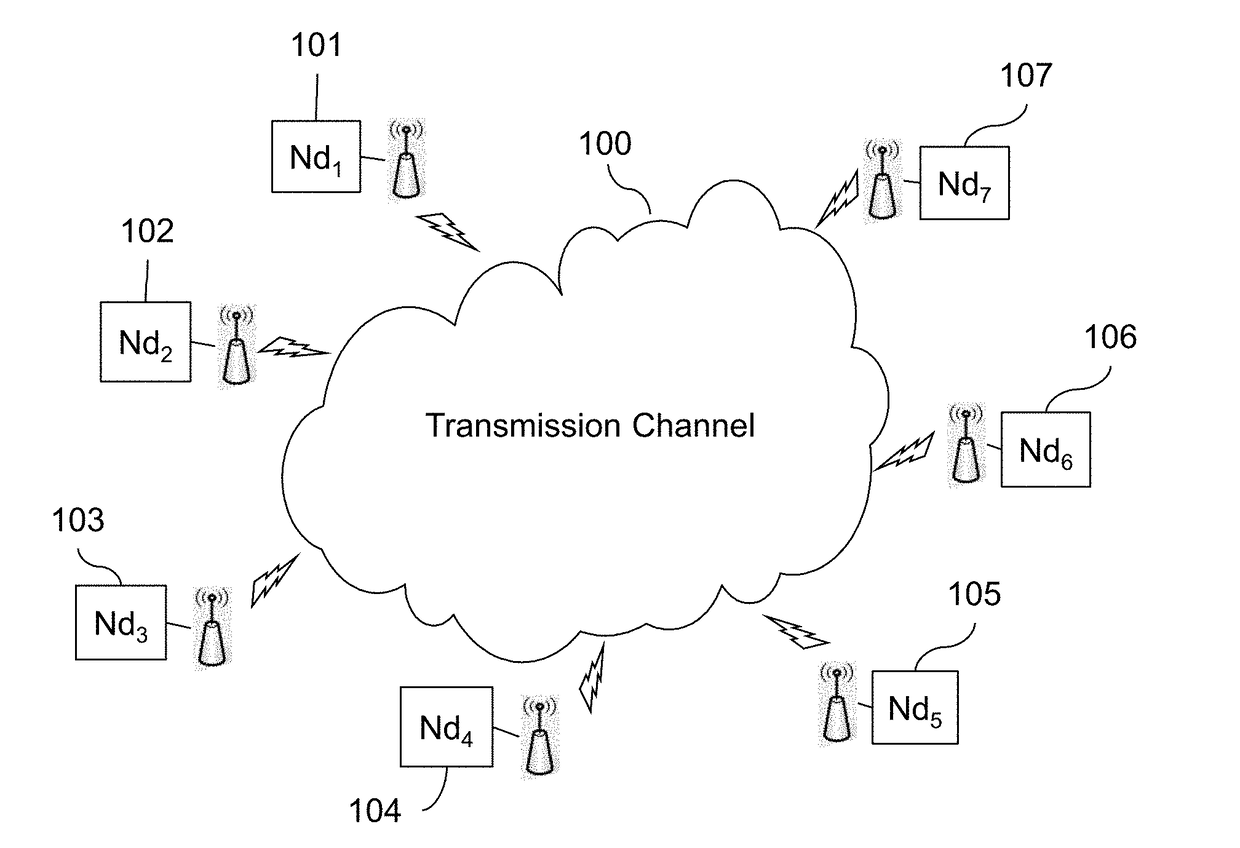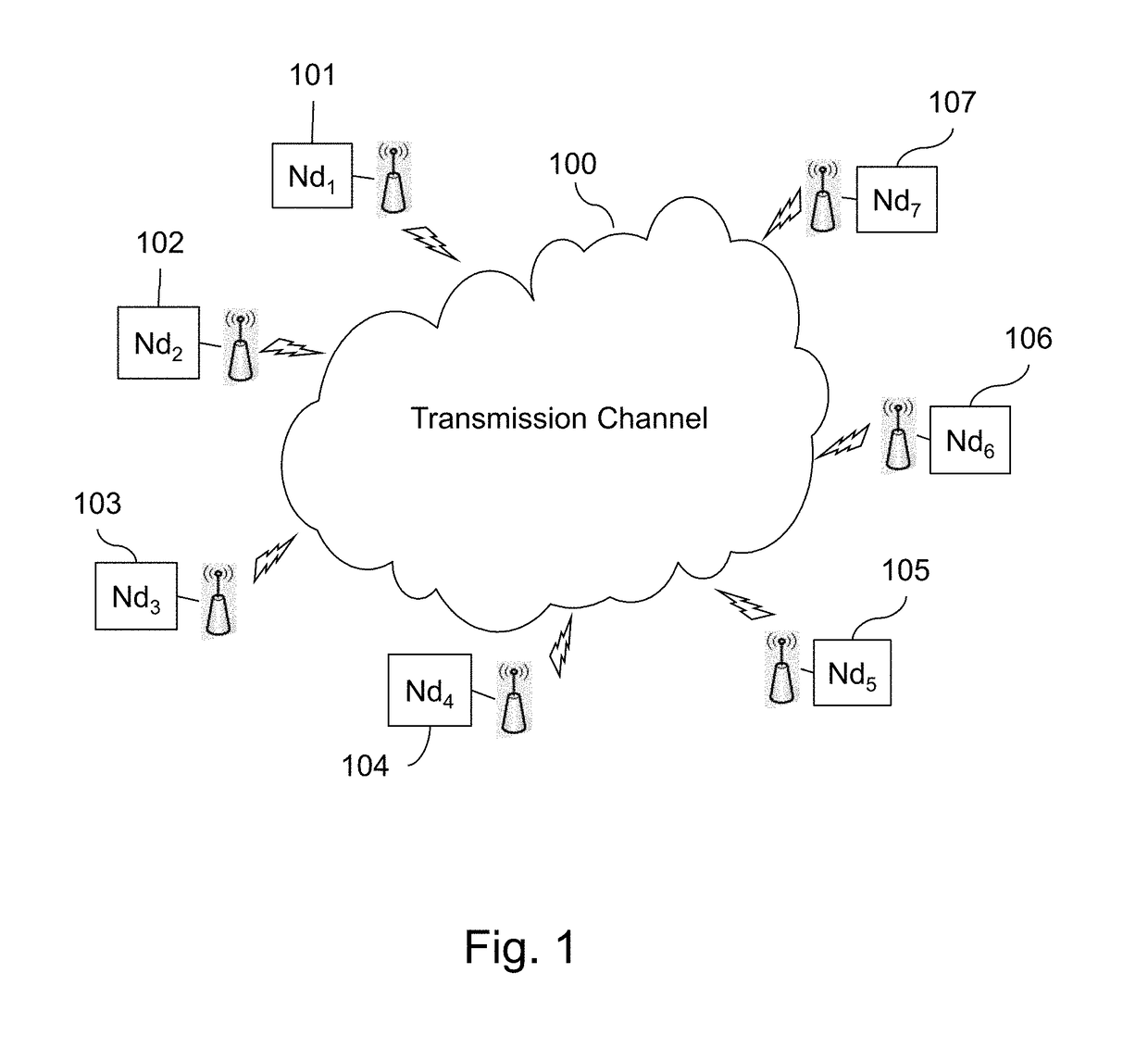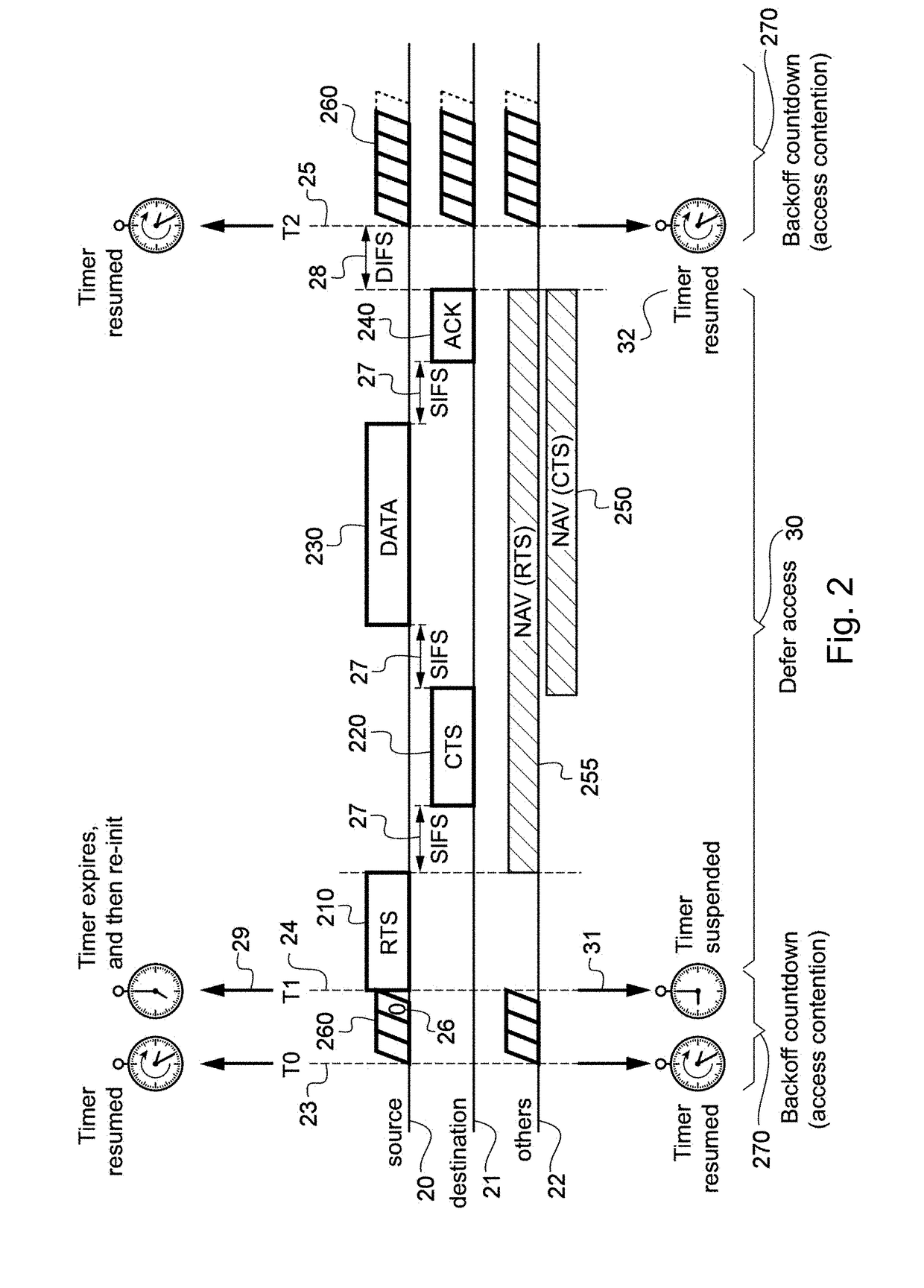Enhanced channel allocation over multi-channel wireless networks
a wireless network and channel allocation technology, applied in the field of communication networks, can solve the problem of reducing the available bandwidth of the composite channel to only 40 or 20 mhz, and achieve the effect of efficient utilization of reserved resources
- Summary
- Abstract
- Description
- Claims
- Application Information
AI Technical Summary
Benefits of technology
Problems solved by technology
Method used
Image
Examples
Embodiment Construction
[0068]The invention will now be described by means of specific non-limiting exemplary embodiments and by reference to the figures.
[0069]FIG. 1 illustrates a communication system in which several communication nodes exchange data frames over a radio transmission channel 100 of a wireless local area network (WLAN).
[0070]Access to the shared radio medium to send data frames is based on the CSMA / CA technique, for sensing the carrier and avoiding collision by separating concurrent transmissions in space and time.
[0071]Carrier sensing in CSMA / CA is performed by both physical and virtual mechanisms. Virtual carrier sensing is achieved by transmitting control frames to reserve the medium prior to transmission of data frames.
[0072]Next, a transmitting node first attempts through the physical mechanism, to sense a medium that has been idle for at least one DIFS (standing for DCF InterFrame Spacing) time period, before transmitting data frames.
[0073]However, if it is sensed that the shared rad...
PUM
 Login to View More
Login to View More Abstract
Description
Claims
Application Information
 Login to View More
Login to View More - R&D
- Intellectual Property
- Life Sciences
- Materials
- Tech Scout
- Unparalleled Data Quality
- Higher Quality Content
- 60% Fewer Hallucinations
Browse by: Latest US Patents, China's latest patents, Technical Efficacy Thesaurus, Application Domain, Technology Topic, Popular Technical Reports.
© 2025 PatSnap. All rights reserved.Legal|Privacy policy|Modern Slavery Act Transparency Statement|Sitemap|About US| Contact US: help@patsnap.com



